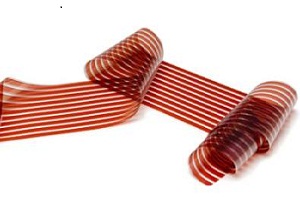Solar on paper—literally
 The geniuses over at MIT have developed a photovoltaic (PV) cell that can be printed on paper, almost like you’d print a photo with an inkjet printer. The technology, according to MIT, is still in its infancy, and it will be years before it’s ready for market. Right now the technology is only about 1.5 percent to 2 percent efficient at converting sunlight into electricity. But the breakthrough represents a way to produce PV at an extremely low cost.
The geniuses over at MIT have developed a photovoltaic (PV) cell that can be printed on paper, almost like you’d print a photo with an inkjet printer. The technology, according to MIT, is still in its infancy, and it will be years before it’s ready for market. Right now the technology is only about 1.5 percent to 2 percent efficient at converting sunlight into electricity. But the breakthrough represents a way to produce PV at an extremely low cost.
The cells are made of nano-sized, carbon-based dyes.
MIT said it’s a first, though other makers of nanophotovoltaics, like Nanosolar also are creating printable solar panels. Bringing nanotechnology and printing technology to PV technology has many important implications. Nanotechnology vastly reduces the amount of materials used in PV cells, reducing the cost of materials needed to make the panels. It also allows for incredibly light PV panels, which makes installation and shipping of the panels much easier. And some nanotechnology processes allow for self-assembly. This reduces the amount of extra energy needed to make the PV materials themselves.
Being able to print the PV cells has additional cost-effective benefits. Since the PV elements of the solar cell are contained in an ink-like medium, they can be sprayed or literally painted on a surface. Some older PV technologies, like silicon wafer or polycrystalline solar, take a lot of energy and time to produce. Some PV cells essentially must be grown. By using existing printing technology, it drastically reduces the time and energy used to produce the cells themselves. And companies like Nanosolar can basically print PV cells from reel to reel—like printing a newspaper.
The MIT technique could also be used to print cells on plastics or other flexible surfaces. At this point, MIT is envisioning a low-cost means of creating PV that doesn’t need to last for 20 or more years, more like just a few years.
One of the engineers of the MIT project said, “One could imagine folding a solar panel in an envelope, slip it in a brief case, and unfolding it to power a light weight laptop—no need for heavy cumbersome untidy cables or plug adapters in different countries.” Imagine that.



